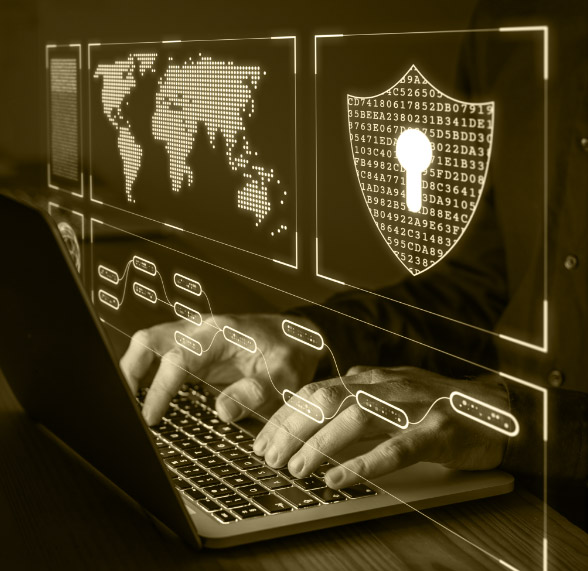30 Good Tips For Picking A Cybersecurity Company in UAE
30 Good Tips For Picking A Cybersecurity Company in UAE
Blog Article
Top 10 Tips For Evaluating The Reputation And Experience Of A Cybersecurity Service Company In Dubai, Uae
1. Evaluation of industry experience
It is recommended to search for companies who have extensive experience working in the cybersecurity field. How long have they been operating? Have they had experience working with companies similar to yours? A company with good track records is more likely to be aware of your particular needs and problems.
2. Review Client Portfolio
Examine the company's client portfolio to assess the variety and relevance of their experience. Companies that have successfully served various industries, and even those relevant to you, are flexible and adaptable.
3. Read Success Stories and Case Studies
You can request case studies that show the success of the business in dealing with cybersecurity challenges. Provide examples of how they have been able to reduce risks or solve problems for clients could provide a greater comprehension of their skills.
4. Research Online Reviews and Ratings
Search for ratings and reviews on sites like Google, copyright or forums that are specific to your field. Positive feedback from clients can indicate a strong reputation, while negative reviews can indicate red flags. Be sure to pay attention to any recurring patterns that show up in customer feedback.
5. Engage with Industry Peers
To get information and suggestions about cybersecurity services providers, connect with your peers. Speaking with people who have experience with the reliability of a certain company's performance can be a valuable method of gaining insight.
6. Evaluation of Thought Leadership Contributions
Check for evidence that shows that the company has contributed to the community of cybersecurity by demonstrating the use of thought leadership. It is possible to look for whitepapers published or participate in conferences for industry professionals. Also, look up cybersecurity forums and blogs. Companies that share knowledge are usually more trustworthy and respected.
7. Verify Professional Certifications & Partnerships
Look for professional certifications and agreements with top technology companies. Membership in well-known cybersecurity organisations or tech firms can show that the firm meets high standards of expertise and is trusted within the field.
8. Inquire About Staff Qualifications
Assess the skills and experience of staff members. Consider obtaining certifications like copyright, CISM, or CEH among their team. Highly skilled teams can boost the reputation of a company and help in reducing cyber-related risks.
9. Assess the response to security Incidents
Examine past security breaches. Their ability to react to incidents will indicate their level and knowledge. The way they handle crises can provide insight into the efficiency of their operation.
10. Find Awards and Recognition
Check for awards and awards that the company might have won in the field of cybersecurity. Industry awards can be a sign of the reputation of a business and excellence in service delivery. Recognitions from reputable organizations often show the commitment to quality and professionalism. See the recommended Cybersecurity Company in UAE for site examples including technology and cyber security, cyber cyber security, it security logo, cybersec consulting, cybersecurity for iot, managed it services security, information technology security, learn cyber security, cyber security cybersecurity, cyber security tools and more.
Top 10 Tips For Assessing The Ability Of An Incident Responder From An It Security Service Company
1. Understand the Incident Response FrameworkBegin by examining the incident response framework that the company is using. A well-defined structure, such the NIST Cybersecurity Framework of the SANS Incident Response Process shows that the company follows best industry practices for managing incidents efficiently. Be sure that they follow a structured procedure for managing incidents.
2. Evaluate Incident Response Team Expertise
Consider the experience and qualifications that members of your incident response team are certified with. Look for certifications like Certified Incident Handlers (GCIH) and copyright Security Professionals (copyright). To effectively manage and mitigate incidents, you need a well-informed team.
Check out previous case studies on incident response
You can request instances or case studies of past incidents managed by the business. Analysing their response to realistic scenarios can give valuable insight into their effectiveness and speed of handling incidents. Discover in detail how they identified, contained and resolved incidents.
4. Make sure you check for 24-hour Incident Response Availability
Find out if the business provides round-the-clock emergency response. Cyberattacks can occur at any time. The presence of a personnel on call 24 hours a day will ensure that any threats are dealt with promptly and will reduce the time to repair and damage.
5. Request Information About Incident-Detection Tools
Review the tools and techniques employed by the business to identify and monitor the impact of incidents. Effective detection tools are vital for identifying threats quickly, including Security Information and Event Management System (SIEM) and intrusion detector systems (IDS).
6. Examine Communication Protocols
Investigate the communication protocols the company uses during an incident. To coordinate responses, educating stakeholders, and ensuring all parties are aware of their obligations, clear and effective communication is essential. It is essential to comprehend how the company keeps clients up-to-date on the various aspects of the reaction.
7. Review Post-Incident Review Processes
Check out the company's review process after an incident. Conducting thorough reviews following an incident helps identify opportunities for improvement. Be on the lookout for companies that implement changes that are in line with the review. This will improve the future efforts to respond.
8. Assess Recovery and Remediation Strategies
It is crucial to know the strategies employed by an organization to the recovery and remediation after an incident. Recovery plans must contain the steps to recover data and systems and ensure that vulnerabilities are addressed to ensure that future attacks to be prevented. Discuss their approach to rebuilding systems and hardening them post-incident.
9. Review compliance with regulatory Requirements
Make sure that your company's incident response capabilities are in line with regulatory requirements. In some industries, there are specific requirements regarding incident reporting and response. These regulations are well-known by businesses that are able to ensure compliance.
10. Get references and testimonials.
Also, collect testimonials from current customers who have used the company's services for incident response. Customer testimonials can provide information about a company's effectiveness, reliability overall satisfaction, as well as the level of service provided to incidents. View the top rated penetration testing company in uae for site advice including data security, cyber security information, information security usa, cyber security requirement, cyber security services near me, learn cyber security, cyber security consulting company, cybersecurity consultancy services, cybersecurity for iot, security ot and more.
Top 10 Tips To Assess The Security Awareness Training Of A Cyber Security Business
1. Examine the Training Content and begin with a review of contents of the security awareness training. Be sure to cover important issues, including phishing (social engineering) and password security compliance, and data security. A thorough curriculum is essential in empowering employees with the information they require to detect and address potential threats.
2. Look for customization options
Find out if the training will fit into your company's culture and the needs of your employees. Adapting the training for your employees' specific needs and challenges can help to improve engagement and relevancy and improve knowledge retention.
3. Examine Training Delivery Methods
Learn about the different methods of delivery to train your employees. You may choose from in-person workshops to online courses, interactive simulations and webinars. Mixing different formats is able to accommodate a variety of learning styles and increase the overall efficiency.
4. Interactive Elements
Verify if interactive elements are used in the training like simulations, quizzes and real-life scenarios. Interactive training improves engagement and retention of knowledge and allows employees to use their skills in real-world situations.
5. Check the frequency of updates
You should inquire about the frequency the training sessions are conducted and how often the content of the course is updated. In order to keep your employees informed about the latest cybersecurity risks it is essential to have regular training sessions.
6. Measurement of Effectiveness
Find out how the company evaluates the efficacy of their training programs. Look at metrics such as participant feedback, preand post-training evaluations, and trending incident reports. Evaluation of the effectiveness of the program will help determine its value as well as areas for improvement.
7. Make sure you are certified and compliant.
If the program is certified this can boost the credibility of the employee. Certifications can enhance employee credibility and prove that they have learned the relevant skills. Ensure that the training you provide is compatible with any regulatory compliance requirements you might have.
8. Search for testimonials and references.
Collect feedback from companies who have used your services before. Testimonials will provide you with an understanding of how well the training was appreciated and how effective it was. Positive feedback is a sign of a good reputation for providing a high-quality awareness training.
9. Evaluate Post-Training Support
After the course, you should inquire about any support you will receive. Continuous resources like refresher classes, newsletters, or access to knowledge databases can help to reinforce the learning.
10. Assessment Engagement and Culture-Building
Then, evaluate the way in which the program has contributed to creating a culture for security within your company. Look for initiatives such as workshops, security newsletters, or contests that foster the continuous monitoring of security. A strong security culture helps employees to take responsibility for protecting the business. Read the top iconnect for more examples including security in data, cyber security what is, cybersecurity and technology, cyber security ot, cyber security what is, computer security services, basic cyber security, security ot, security by design, cyber security consulting and more.